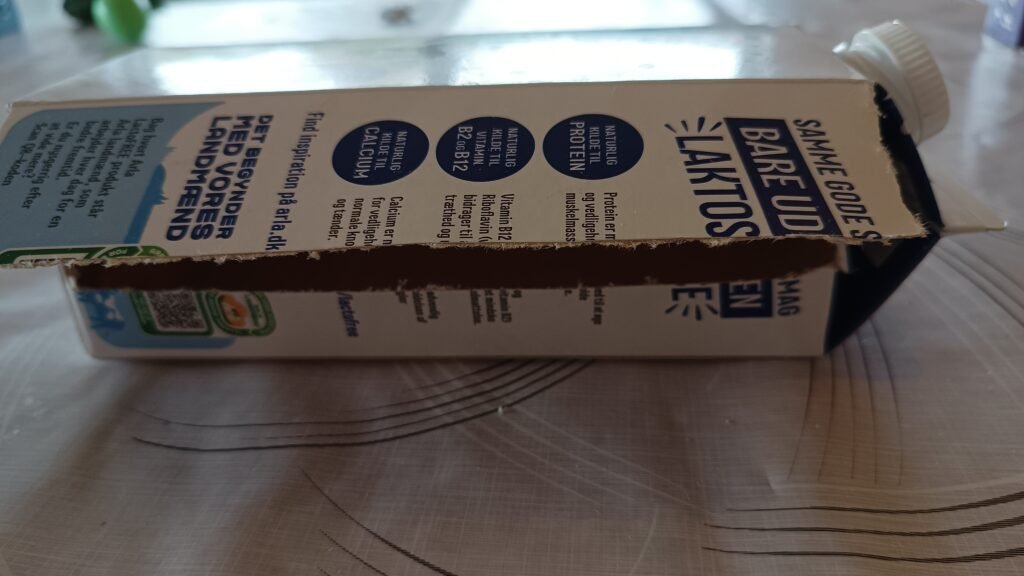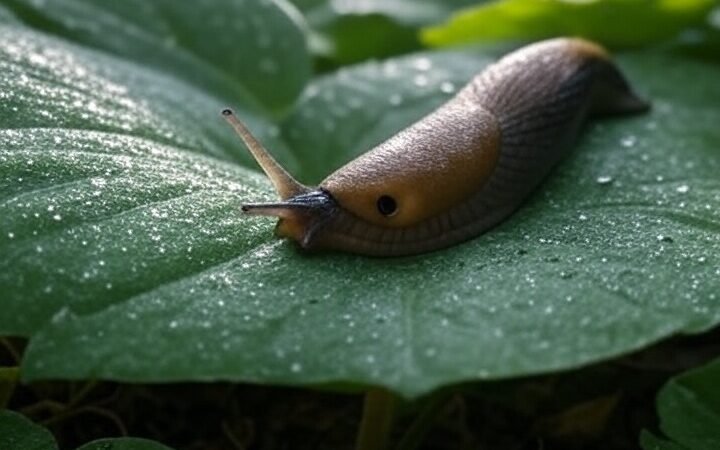Your cart is currently empty!
Slugs can be a real headache for anyone growing veggies in northern Europe, where the damp weather turns your garden into their personal buffet. Some years, they’ll wipe out freshly sprouted seeds in just a few days—last season, we said goodbye to our entire carrot and pumpkin crop thanks to them. Over the years, we’ve experimented with plenty of chemical-free ways to keep them in check, and a handful have proven reliable. If you’re searching for “natural slug control Denmark” or “slug prevention northern Europe,” here’s what we’ve learned from hands-on trial and error. No pesticides, just practical steps to combat slugs in the kitchen garden that fit into a busy gardening routine.
Beer Traps: Our Go-To Slug Buster
Beer traps have been a game-changer for us, keeping slugs away from the plants with minimal fuss. Here in Denmark, where milk cartons are everywhere, we repurpose them into simple traps by cutting openings on the sides like on the image below. But honestly, any watertight container works fine, from yogurt pots to old tins.

The trick is a shallow pool of beer at the bottom, about 2 cm (or less than an inch) deep, so the slugs slide in and drown. Place them strategically around your beds, but always add a lid or roof (like a plastic lid propped up) to keep out rainwater or your watering can. The entry holes should hug the ground—slugs aren’t great climbers, so make it easy for them. We use disposable containers headed for the bin anyway, which makes dumping the soggy contents a non-event when they start to stink after a few days. (That’s the big downside: the smell hits hard, but a quick refresh every couple of evenings sorts it.)
We’ve tried everything from party leftovers to the bargain-bin cheapest lager, and the slugs don’t discriminate—they go for it all. In our rainy Danish climate, where slugs thrive year-round, this method has been a staple every season. It’s low-cost, effective, and lets us focus on the fun parts of gardening.
Gathering Slugs: The Hands-On Approach
For a more direct attack, we’ve paired traps with the old-school method my parents swear by: evening patrols with a bucket of saltwater and a pair of tongs. Just stroll through the garden at dusk (prime slug hour), spot the shiny trails, and pluck them off leaves or the soil into the brine. Empty the bucket far from the garden afterward to avoid attracting more.
It’s straightforward and satisfying—watching hundreds meet their end feels like a win—but it’s labor-intensive, especially on bigger plots. At our place, traps handle most of the load, but my parents’ larger setup means collecting several hundred a day. If your slug issue is overwhelming, this combo keeps things under control without much gear.
Commercial Slug Controls: What’s Available Locally
Depending on where you are, off-the-shelf options vary due to local regs. In Denmark, the main player is iron phosphate-based pellets (like those branded for slug control), which make slugs stop feeding and retreat underground. From our testing, it does the job, but it’s pricey—you’ll want to pair it with a trap or container to keep it dry in our wet weather.The packaging claims iron phosphate occurs naturally in soil, so it’s eco-friendlier than harsher chemicals. Whether that’s fully accurate is up for debate, but it’s a solid backup when natural methods need a boost. Always check labels for your area’s rules, as availability shifts across northern Europe.
More Natural Tricks For Slugs In The Kitchen Garden
Beyond our favorites, there are a few other methods we’ve heard about or spotted in gardening circles that align with a no-pesticide vibe. We haven’t tested them all ourselves yet, but they’re low-risk and easy to slot into your routine. Here’s a roundup of promising ones:
- Copper Tape Barriers: This is the one we’ve dabbled with on raised beds—wrap or stick copper tape around the edges, and the mild electric reaction with slug slime sends them packing. It shines on elevated setups but can work at ground level too, though you might need wider strips for full effect. Just refresh it seasonally as it wears.
- Crushed Eggshells: Save those shells from breakfast, rinse and crush them into a gritty barrier around plants. The sharp edges deter slugs without harming soil life, and they add a calcium boost to boot. Scatter a thick ring after rain for best results—it’s free and doubles as mulch.
- Coffee Grounds: If you’re a coffee drinker, sprinkle used grounds around vulnerable seedlings. The caffeine and texture put slugs off, and it’s another soil amendment in disguise. Start light to avoid over-acidifying, and reapply after wet weather—some gardeners swear by it for lettuce beds.
- Encouraging Predators: Boost your garden’s natural defenses by adding bird feeders, a small pond for frogs, or log piles for beetles. Ground beetles and thrushes love a slug snack, so creating habitats pays off over time without daily effort. In our damp northern spots, this builds long-term resilience.
- Nematodes: For a biological edge, these microscopic worms target slugs underground without touching other wildlife. Mix with water and apply via a watering can in cooler evenings—it’s pricier upfront but effective for heavy infestations and safe for edibles.
We’ve got our eyes on the eggshells next season—cheap and cheerful. Pick one or two to test based on your setup; mixing methods often yields the best results.
Wrapping Up: Keep Your Kitchen Garden Slug-Free
Slugs in your kitchen garden seem unbeatable in our soggy northern European summers, but with a mix of traps, hand-picking, and a few barriers, you can protect your crops without the chemical hassle. We’ve reclaimed our carrots and pumpkins this year, and it’s all about consistency. What’s your top slug-busting tip for “organic slug control in rainy climates”? Share in the comments—we’re always swapping notes. Happy gardening, and may your beds stay munch-free!
